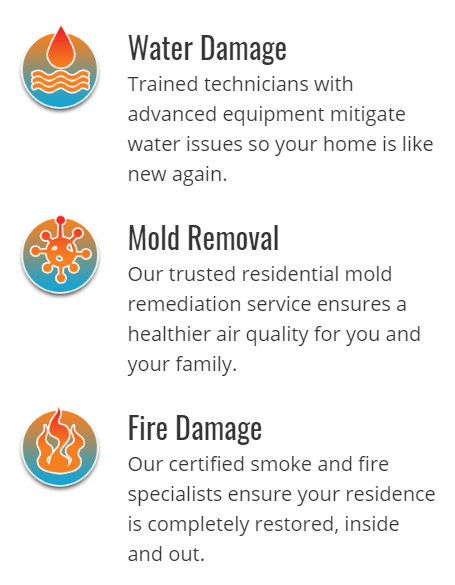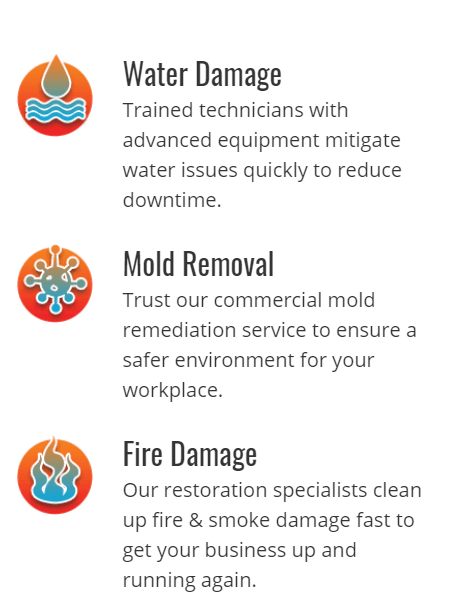
A sewage backup is the one plumbing disaster no one should endure. Typically, an overflow is caused by damage or a blockage within the plumbing line. The water and waste then back up into the home, depositing countless gallons of water and waste into the bathroom. This material is harmful, containing bacteria, viruses, and parasites. As such, any contact can result in severe infection or long-term disease. You need a sewage cleanup professional to deal with the mess. Hiring a local restoration company is the only solution. If you want to save a few bucks, hire an expert instead of DIY cleanup. You’ll save more in the long-run. Sewage Backup – The Dangers and Damage Due to sewage waste containing many harmful organisms, including parasites, bacteria, and even E. coli, the risks are far too high. These contaminants are harmless while in our digestive tract, but when introduced out into the world and then back into our bodies, such as through ingestion or dermatological contact, illness is likely to occur. Perhaps one of the most common diseases caused by sewage contamination is gastroenteritis. This disease causes vomiting, diarrhea, stomach pain, nausea, and worse. The second most common disease is hepatitis, which may cause total liver failure. One of the most common ways to obtain such an illness caused by sewage is through a minor cut or rash on the skin – dermatological contact. Even a small cut can lead to a serious infection. You’ll need medical treatment promptly. Sewage Cleanup Process The sewage cleanup process, when performed by professionals, is thorough. There is no stone left unturned. So, instead of using a mop and bucket and hoping for the best, contact a local restoration company. Assessment – It all starts with a thorough assessment of the damage to determine how far the sewage waste has spread and the ensuing contamination. Removal – Next, the team will start removing the standing water and sewage waste from the area. Salvage – With the contents of the backup gone, the team will focus their attention on your possessions and building materials. Any damaged items will be removed from the area for a thorough cleaning, sanitization, and restoration. Restoration – Finally, the restoration team will repair and restore damaged portions of the property, including flooring, drywall, and carpet. In the event of a sewage backup, find an expert to deal with the situation at Restoration 1 of Jacksonville . We offer 24-hour sewage cleanup when you call 904-543-3844!

A flooded business can spell devastation for the future. After all, not only are you relying on your company to succeed, but so are your employees and the customers you greet each day. The process for a quick recovery after any type of water damage is straightforward. As the water seeps into the carpet, flooring, furniture, and walls, the need for a water damage restoration professional becomes more necessary than ever before. First, let’s explore the commercial water damage restoration process. This is the step-by-step plan that will put your business back on the map. Commercial Water Damage Restoration Process The commercial water damage restoration process is broken down into six key steps: Step 1: Emergency Contact – Your initial phone call to a local restoration company is the first step in the process. When you call, a team of certified restoration experts is dispatched within an hour. Step 2: Assessment – Next, a full assessment of the property is performed. The team will closely examine the source of your water damage, how it has spread, and what items and materials were affected by the damage. Step 3: Water Removal – The water removal/extraction process involves the use of advanced restoration equipment, such as wet vacuums and pumps, to eliminate standing water from the property. Step 4: Drying and Dehumidification – Once the standing water is extracted, the team will bring in industrial fans, air movers, and dehumidification equipment to dry all affected areas and prevent mold growth. Step 5: Sanitization – With certain types of water damage, sanitization is crucial to prevent the spread of waterborne contaminants. Step 6: Restoration – The final step in the process is restoring the business to its pre-damage condition. This step involves minor repairs, including replacing drywall and installing carpet, as well as major repairs, including reconstruction. Accommodating Businesses When you hire a local restoration company, the team that arrives at your business within an hour will focus solely on accommodating your needs. From the very first estimation to the final step in the restoration process, the team is there to handle your needs. When it comes to water damage, especially black water damage, there are protocols in place to prevent worsening conditions. If you wait, the damage will be far greater. As such, scheduling water damage restoration the moment you notice a problem is ideal. Here at Restoration 1 of Jacksonville, we have a proven track record for helping businesses overcome any type or amount of water damage. Our step-by-step process is guaranteed to provide results in the shortest time possible. For 24-hour water damage restoration , please call us at 904-543-3844 !
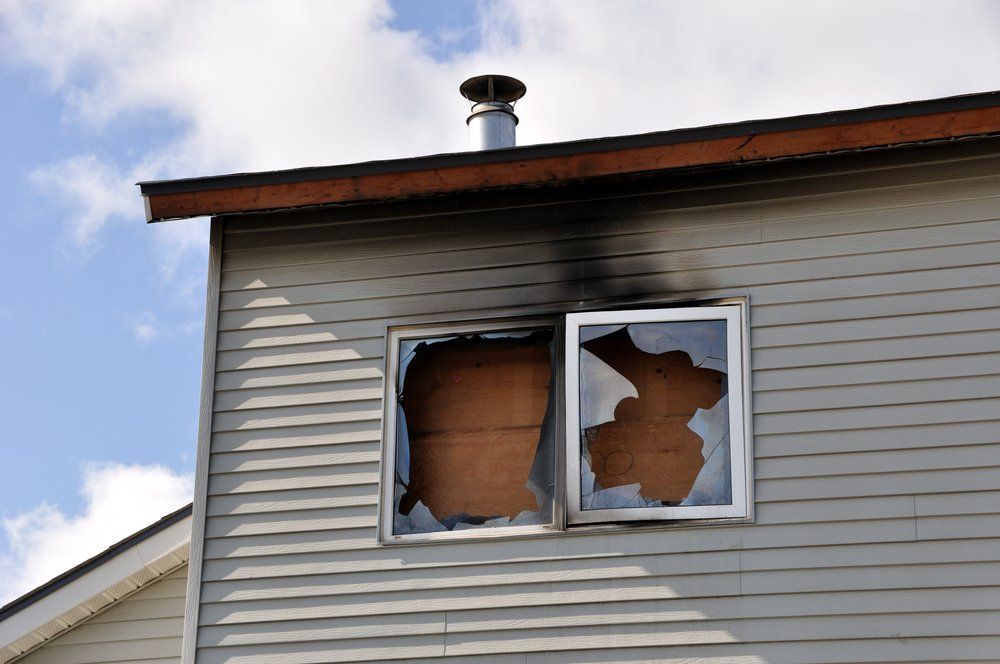
We all know that fire is dangerous. It’s one of the most disastrous forms of property damage imaginable. However, it’s not just the flames that wreak havoc. Once the fire is extinguished and the fire department has left the scene, it’s the ensuing smoke damage, soot, and water damage that continue to pose a problem. Perhaps the worst of all three, smoke damage seeps into your furniture and fabrics within your home, and hides in the air ducts. In these spots, it continues to fester. You’ll notice a persistent, foul odor permeating the air. Your respiratory health may be negatively affected, too. As such, hiring a professional fire & smoke damage restoration company is the only sure solution. Smoke and the Surrounding Environment For the most part, homes are not empty spaces. You have furniture, decorations, and features that would not interact well with smoke damage. Often, smoke can be found in bizarre spots within a home – places you never even thought to consider. For instance, we often find smoke damage in: Enclosed Spaces – If you thought some of the spaces in your home were sealed off, then you thought wrong. It’s common to find smoke damage in dresser drawers, sealed closet spaces, and wall crevices. The molecules become excited by the warm air caused by the fire and rapidly move into such areas. Behind Drapes and Blinds – The temperature difference between your living room, for example, and the space behind your drapes is often quite large. As smoke is inclined to move to a cooler area, it’s common to discover smoke damage behind drapes or blinds. Smoke Damage and Your Health Exposure to smoke damage and soot during the fire restoration process typically occurs via inhalation and ingestion. As the airborne soot particles are nearly invisible to the naked eye, you may be unknowingly breathing in harmful particles every time you enter the property. Once smoke and soot enter the bloodstream, a large number of health concerns arise. For instance, after a fire, homeowners often suffer from respiratory disease, shortness of breath, bronchitis, asthma, stroke, heart attack, and even premature death – all caused by smoke damage. In infants, short-term exposure to smoke and soot have been known to cause developmental disorders. Most often, these disorders are focused on developing respiratory diseases, like asthma of varying degrees and severity. Toxic Materials Found in Smoke Some of the most common toxic materials found in smoke include: Mesothelioma-causing asbestos fibers used in building materials from the 1950s-1980s. Carbon materials producing carbon monoxide, hydrogen, ammonia, nitrogen oxides, and tar. PVC producing hydrogen chloride, phosgene, dioxin, chloromethane, bromomethane, and halocarbons. Sulfur forming hydrogen sulfide, sulfur dioxide, and thiols that cause smoke odors. In the aftermath of a house fire, Restoration 1 of Jacksonville is here 24/7 to help you recover and put your life back on track, please call us at 904-543-3844 !
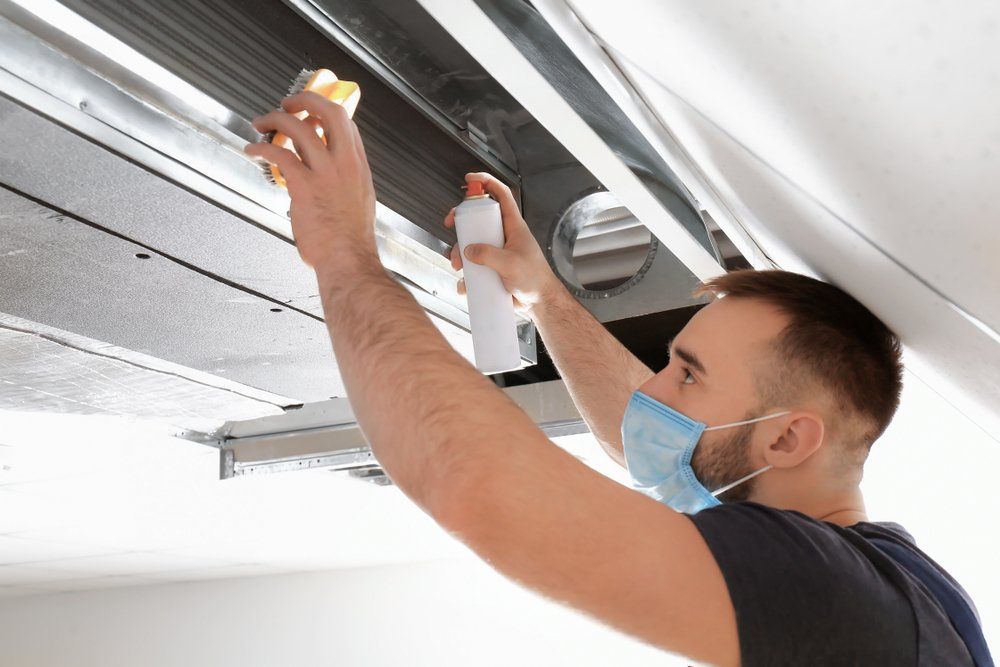
Your home’s air ducts are often overlooked. They are one system in your home, working in tandem with another, that you simply expect to function. Too few of us realize that the network of ducts in the ceiling can succumb to dirt and debris over the years. This buildup ends up lowering the overall efficiency of the entire HVAC system. Even worse, a dirty air duct will directly affect your respiratory health. You’ll find yourself coughing and sneezing more frequently, and allergies will worsen depending on the time of the year. Before your respiratory health takes a hit, consider scheduling a professional air duct cleaning . Your home and health will thank you. Why You Should Schedule Air Duct Cleaning The majority of people spend their time indoors. Still, only a select few take the time to consider indoor air quality. It’s a rising concern throughout the country. These days, poor indoor air quality can lead to all manner of respiratory and mental health concerns. One key way to improve your indoor air quality is by scheduling professional air duct cleaning. Here are a few reasons to schedule air duct cleaning: Health – Your health is paramount. Over time, dust and airborne contaminants build up in the duct system. This air is then released into your home, affecting your health. It will lead to allergies, asthma, and numerous respiratory conditions. Performance – By cleaning the air ducts regularly, your HVAC system will perform better and more efficiently overall. If the ducts are bogged down with grime, you’re losing a significant percentage of cool or heated air to the home. Lifespan – Taking care of your air ducts goes hand-in-hand with the lifespan of your HVAC system. Without proper maintenance, your system is likely to fail after a few years. If you want the most of your unit, schedule duct cleaning. Odors – There are countless odors caused by poor indoor air quality and grime in the air ducts. A scented candle or air freshener will mask the scent for a short while, but it won’t help for long. The only surefire way to eliminate foul odors coming from the ducts is to schedule a thorough cleaning. The Cost of Professional Air Duct Cleaning Overall, considering the number of benefits it provides, professional air duct cleaning is relatively inexpensive. It’s an investment in your home and health. On average, homeowners can expect to pay between $400 and $1,000 for air duct cleaning services. The price varies based on a few factors, such as: Size of the system being cleaned System accessibility Climatic region Levels of contamination and grime If you’re worried about your indoor air quality and respiratory health, schedule professional air duct cleaning today. Call Restoration 1 of Jacksonville at 904-543-3844 !

We are firmly in hurricane season right now, and with tropical storms bearing down upon the community, it’s time we all prepared for water damage. Storm damage isn’t the only cause for concern, though. As homeowners, we must also worry about leaking plumbing and appliances, burst pipes, and more. The risk of water damage is around every corner. Over the years, our restoration company has helped countless homeowners recuperate after water damage. We know a thing or two about recovering and coming out stronger than ever. It all starts with the water damage restoration process. Key Steps After Water Damage It does not matter what the cause of your water damage may be, you need to have control over the situation and know how to react. Here are the key steps to take after flooding or water damage of any kind. Safety First It’s important to remember that safety is paramount. If flooding is severe enough, you’ll be forced from your home. It’s tough to leave behind something you built, plus all of your possessions, but your life is worth so much more. To ensure you’re safe when you return home, consider the following: Utilities – Shut off the water, electricity, and gas to the entire home. As we all know, electricity and water do not mix well. Clothing – Always wear protective clothing – rubber boots, gloves, a respirator, etc. – when you re-enter the property. Illness – Avoid illness by thoroughly washing any surfaces, dinnerware, glasses, or flatware caught up in the water damage. Valuables – If possible, lift wood furniture off of the wet carpet and put tin foil under the feet of any leftover furniture to prevent staining. Drying the Property Next, once your safety is ensured, drying the property is crucial. This is one step in the water damage restoration process that you can start yourself. Whenever possible, use your central air conditioning to remove humidity. Then, open the windows and doors to promote airflow. If you have fans or dehumidifiers, place them in key positions throughout the affected area. Call the Insurance Company Dealing with water damage can be expensive. You’ll likely wish to file a property damage claim with your insurance company to receive money to cover the cost of repairs. Your insurance company will need to send an adjuster first. As such, the sooner you call, the sooner they can arrive to inspect the home. Call a Restoration Company With water damage, you’re on the clock. Once you’re done with the insurance company, contact a local restoration company. The team will be ready with advanced restoration equipment and can usually arrive within an hour. Upon arrival, they will assess the damage, mitigate water damage, begin removing standing water, and put you on the path to a safer home. Leave the water damage cleanup to the experts at Restoration 1 of Jacksonville . We offer 24-hour service for homeowners and local businesses alike. Just call 904-543-3844 !

Too few of us fear storms. We sit idly by as a thunderstorm outside our door pummels the neighborhood with wind and water. On rare occasions, these storms are bad enough to tear down power lines, rip a hole in the roof, and wreak absolute havoc. In such cases, the storm damage restoration process is crucial. A local restoration team can arrive within an hour and begin mitigating damage and cleaning up any standing water. Whether you call such a company is up to your discretion, though it’s often best to leave storm damage cleanup to the experts. They handle any risks more efficiently. Storm Damage Restoration Process The storm damage restoration process, like the water damage restoration process, is broken down into key steps. These steps include: Assessment – First, the team must perform a thorough assessment of the entire property. They will explore each room and area, looking for signs of damage, and craft a plan. Mitigation – If the storm is ongoing, the team will take steps to reduce any further damage by tarping or sealing off the area. Cleanup – With a severe storm, water and wind damage are a huge problem. There will likely be standing water, broken glass, and storm debris that needs to be cleaned properly. Repair and Restoration – The team will begin repairing or restoring broken cabinets, surfaces, furniture, and building materials throughout the home. Depending on the state of the property after the storm, total reconstruction may be necessary. In this case, the team will help you rebuild from the ground up. Calling a Restoration Professional When dealing with storm damage, you want to leave nothing to chance. You always want to hire the best restoration team to tackle the damage to your home or office. In this way, you ensure guaranteed results. When hiring an expert, which should be done early, consider the following: Licensing – proper licensing is crucial. Each state requires restoration companies handling emergency situations to be fully approved and licensed before operating in the region. Certification – The best restoration companies are IICRC-certified and ready to show you the proof when asked. Experience – You never want to hire a company that is inexperienced when it comes to the sanctity of your home. Find one with years of experience and proof of their results. Technology – Does the team use the most advanced restoration equipment? If not, perhaps it’s time to move on and find another company. Find the best storm damage restoration service with Restoration 1 of Jacksonville. For 24/7 restoration services, call 904-543-3844!

Following a house fire, you’ll need to fight the urge to begin the restoration process yourself. All of us want to protect our homes – even from a severe fire. The fact of the matter is, a fire can lead to extremely unsafe conditions. The contamination caused by the smoke and soot, the weakened structural integrity – your house is unsafe. Instead, you’ll want to call a local restoration company for top-rated, efficient fire damage restoration . The results you’ll receive from the experts will be worth every penny. Before long, you’ll have your home returned to you. The Fire Damage Restoration Process The professional fire damage restoration process is broken down into a few key steps. These steps include: Assessment First, it’s important that the team conducts a full assessment of the property. Even restoration experts cannot provide top-notch service without better understanding the damage. They will move through each room, using advanced equipment to test the house for signs of damage and weak points. Mitigation The smoke and soot caused by a fire can lead to extensive damage long after the flames have been extinguished. The same goes for the water used by the fire department. Both must be dealt with promptly to mitigate damage. Cleanup With the area stabilized, it’s time to begin cleaning the soot, ash, smoke damage, and debris. During the cleanup process, any damaged possessions will be removed, salvaged, and restored whenever possible. Otherwise, they will be disposed of properly. Sanitization With smoke and soot, part of the damage stems from contamination. Your respiratory health is at risk. As such, the restoration team will begin deodorizing, deep cleaning, removing stains, and sanitizing the entire household. This includes the HVAC system, which will be restored or replaced to provide clean air to the entire property. Restoration and Repairs Lastly, the team will begin repairing and restoring the entire household. This goes for any ruined floorboards, broken cabinets, damaged carpet, and furniture – anything ruined in the household can be repaired or replaced. What to Do in the Event of a Fire If there is a fire in your home or office, here are a few useful tips: Pull the nearest fire alarm and exit the building immediately. While evacuating, make sure to feel each door for signs of heat before opening. If there is smoke, stay low to the ground to reduce inhalation and exposure. Once clear of the building, contact emergency services. In the event of a fire, call the fire department first. Then, contact Restoration 1 of Jacksonville for 24-hour fire damage restoration services at any time. You can reach us by calling 904-543-3844 !
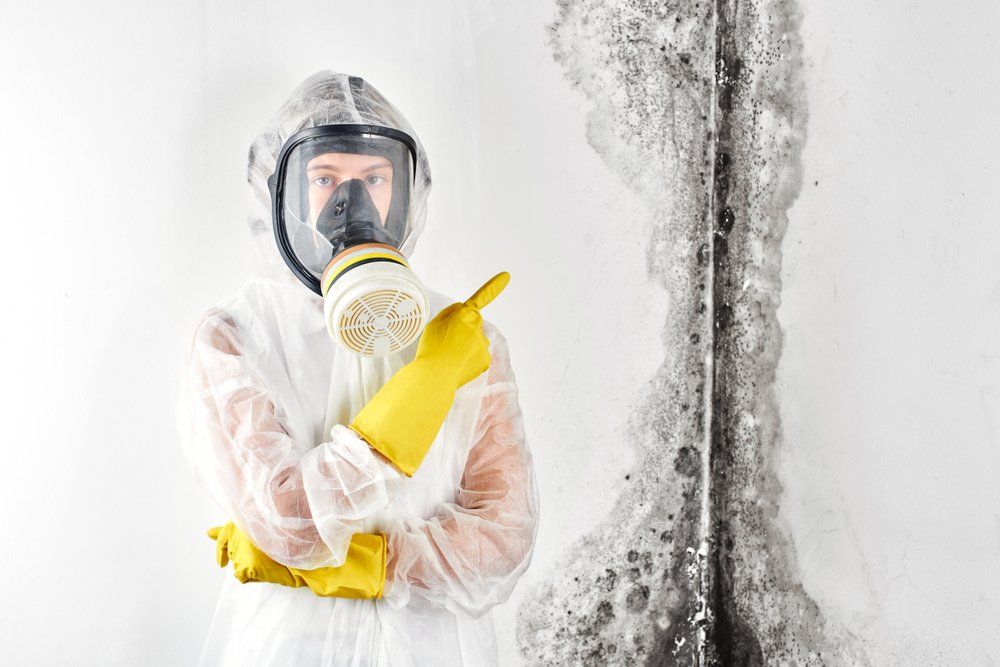
No one wants mold in their home. It happens more often than you would care to imagine, though. With the right conditions, mold can grow in almost any environment. In fact, there are mold spores all around us, ready to settle down and spread their influence. The air you breathe each day is loaded with mold spores. The bottom line is, mold is inevitable – outdoors. In your home, you can take charge and prevent mold from growing and spreading. Before you need professional mold remediation services , here are the top causes of mold and what you can do to stop them. How Mold Grows and Thrives Mold requires certain conditions within the home to grow and spread. These conditions include: Airborne mold spores A food source, such as wood, drywall, or organic materials Darkness Oxygen Moisture Time With all of these conditions perfectly aligned, it won’t be long before you find a full-blown mold infestation in your home. One of the biggest causes of mold in most residential households is a combination of humidity and moisture from a recent plumbing leak or flood damage, both of which can be dealt with promptly. Top Causes of Mold in the Home While humidity and moisture are general causes of mold, we can break it down further into real-world examples. Leaking Pipes A recent water leak from a pipe, perhaps one tucked in a wall or under the floor, can lead to immense water damage that goes unnoticed. The longer the water damage goes untreated, the more likely you are to deal with mold growth. Roof Leaks A leaking roof, like a leaking pipe, will lead to extensive water damage in the attic of your home. Typically, most of us don’t venture into the attic unless absolutely necessary – maybe once per year or so. As such, the water damage will likely go unchecked. Condensation Excessive condensation around your home, caused by cold surfaces, can lead to moisture buildup that helps feed mold infestations. Often, condensation forms on cold metal pipes, concrete flooring, and windows. Keep an eye on these spots for signs of condensation. Ventilation If your home does not have proper ventilation, such as in the attic or bathroom, the air will eventually stagnate and moisture will accumulate. With stagnant air and moisture, mold has the perfect environment to thrive. Many professional roofing companies can help you with your ventilation troubles, ensuring the entire system is efficient. If you are worried about mold, have a moisture problem, or find mold in your home, contact Restoration 1 of Jacksonville immediately. We offer 24-hour mold remediation services when you call 904-543-3844 !




